Yanan Du
GSM: A GNN-based Space-MIMO Framework for Direct-to-Cell Communications
Dec 10, 2024



Abstract:This paper proposes a graph neural network (GNN)-based space multiple-input multiple-output (MIMO) framework, named GSM, for direct-to-cell communications, aiming to achieve distributed coordinated beamforming for low Earth orbit (LEO) satellites. Firstly, a system model for LEO multi-satellite communications is established, where multiple LEO satellites collaborate to perform distributed beamforming and communicate with terrestrial user terminals coherently. Based on the system model, a weighted sum rate maximization problem is formulated. Secondly, a GNN-based method is developed to address the optimization problem. Particularly, the adopted neural network is composed of multiple identical GNNs, which are trained together and then deployed individually on each LEO satellite. Finally, the trained GNN is quantized and deployed on a field-programmable gate array (FPGA) to accelerate the inference by customizing the microarchitecture. Simulation results demonstrate that the proposed GNN scheme outperforms the benchmark ones including maximum ratio transmission, zero forcing and minimum mean square error. Furthermore, experimental results show that the FPGA-based accelerator achieves remarkably low inference latency, ranging from 3.863 to 5.883 ms under a 10-ns target clock period with 8-bit fixed-point data representation.
Microwave QR Code: An IRS-Based Solution
Aug 05, 2022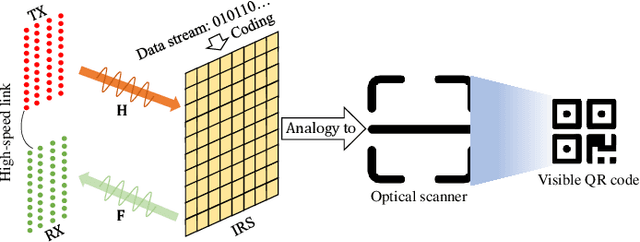
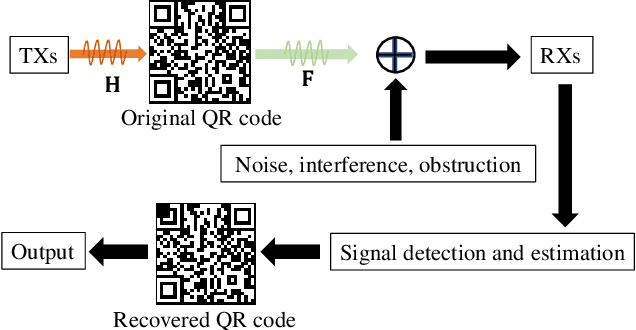
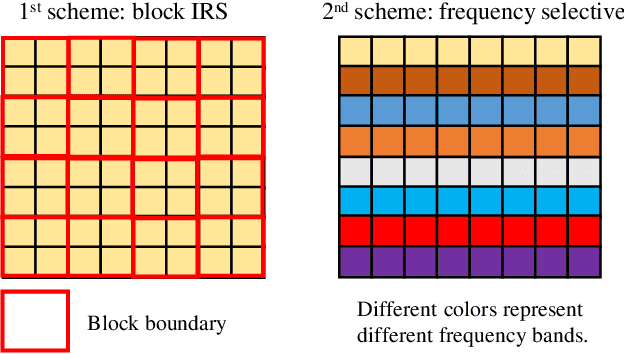

Abstract:This letter proposes to employ intelligent reflecting surface (IRS) as an information media to display a microwave quick response (QR) code for Internet-of-Things applications. To be specific, an IRS is used to form a dynamic bitmap image thanks to its tunable elements. With a QR code shown on the IRS, the transmitting and receiving antenna arrays are jointly designed to scan it by radiating electromagnetic wave as well as receiving and detecting the reflected signal. Based on such an idea, an IRS enabled information and communication system is modelled. Accordingly, some fundamental systematic operating mechanisms are investigated, involving derivation of average bit error probability for signal modulation, QR code implementation on an IRS, transmission design, detection, etc. The simulations are performed to show the achievable communication performance of system and confirm the feasibility of IRS-based microwave QR code.
An IRS Backscatter Enabled Integrated Sensing, Communication and Computation System
Jul 20, 2022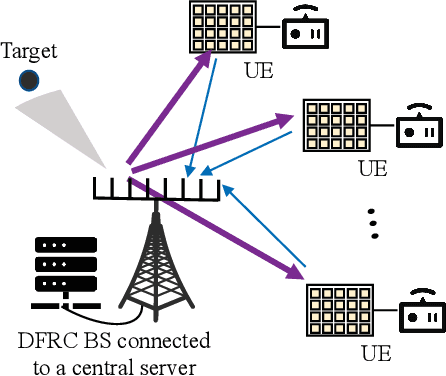
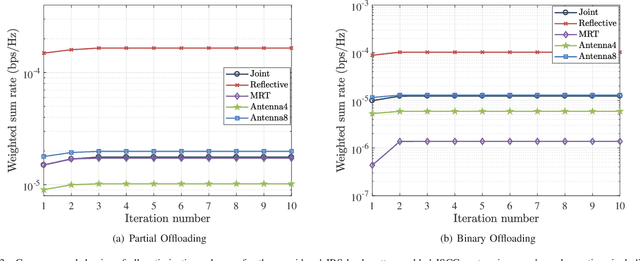


Abstract:This paper proposes to leverage intelligent reflecting surface (IRS) backscatter to realize radio-frequency-chain-free uplink-transmissions (RFCF-UT). In this communication paradigm, IRS works as an information carrier, whose elements are capable of adjusting their amplitudes and phases to collaboratively portray an electromagnetic image like a dynamic quick response (QR) code, rather than a familiar reflection device, while a full-duplex base station (BS) is used as a scanner to collect and recognize the information on IRS. To elaborate it, an integrated sensing, communication and computation system as an example is presented, in which a dual-functional radar-communication BS simultaneously detects the target and collects the data from user equipments each connected to an IRS. Based on the established model, partial and binary data offloading strategies are respectively considered. By defining a performance metric named weighted throughput capacity (WTC), two maximization problems of WTC are formulated. According to the coupling degree of optimization variables in the objective function and the constraints, each optimization problem is firstly decomposed into two subproblems. Then, the methods of linear programming, fractional programming, integer programming and alternative optimization are developed to solve the subproblems. The simulation results demonstrate the achievable WTC of the considered system, thereby validating RFCF-UT.
 Add to Chrome
Add to Chrome Add to Firefox
Add to Firefox Add to Edge
Add to Edge